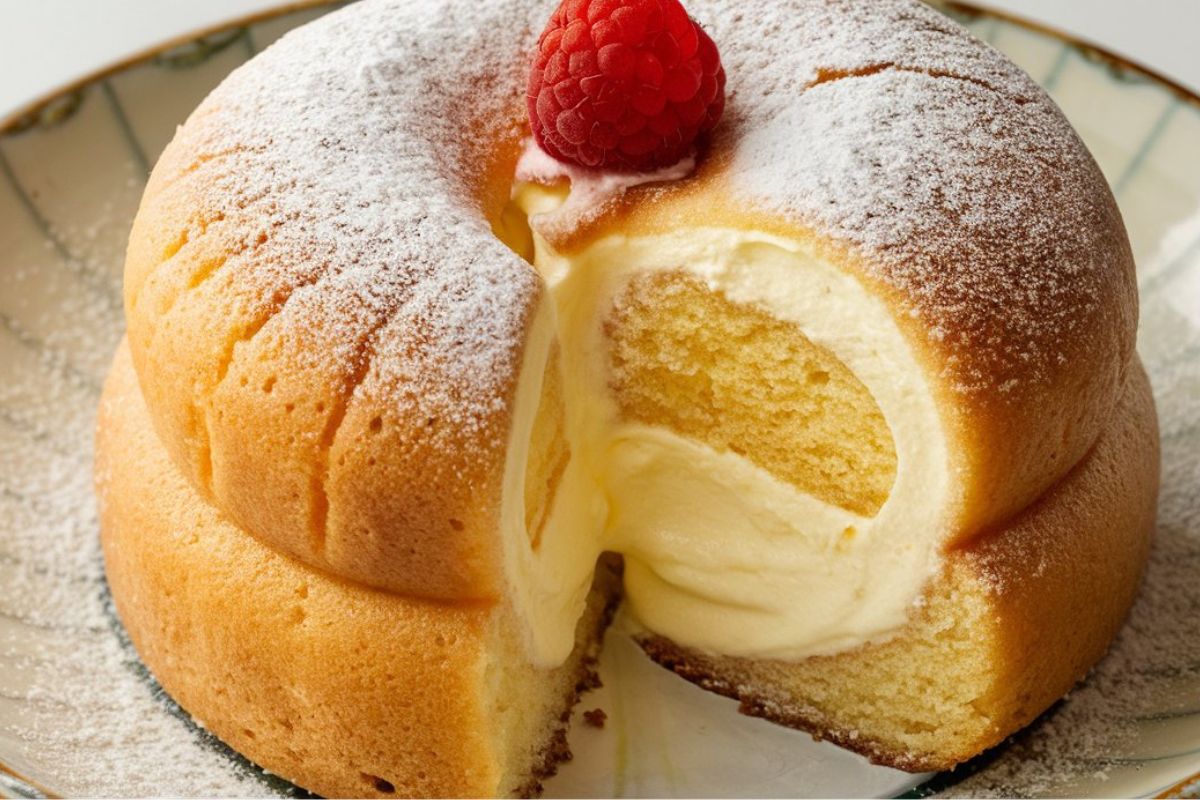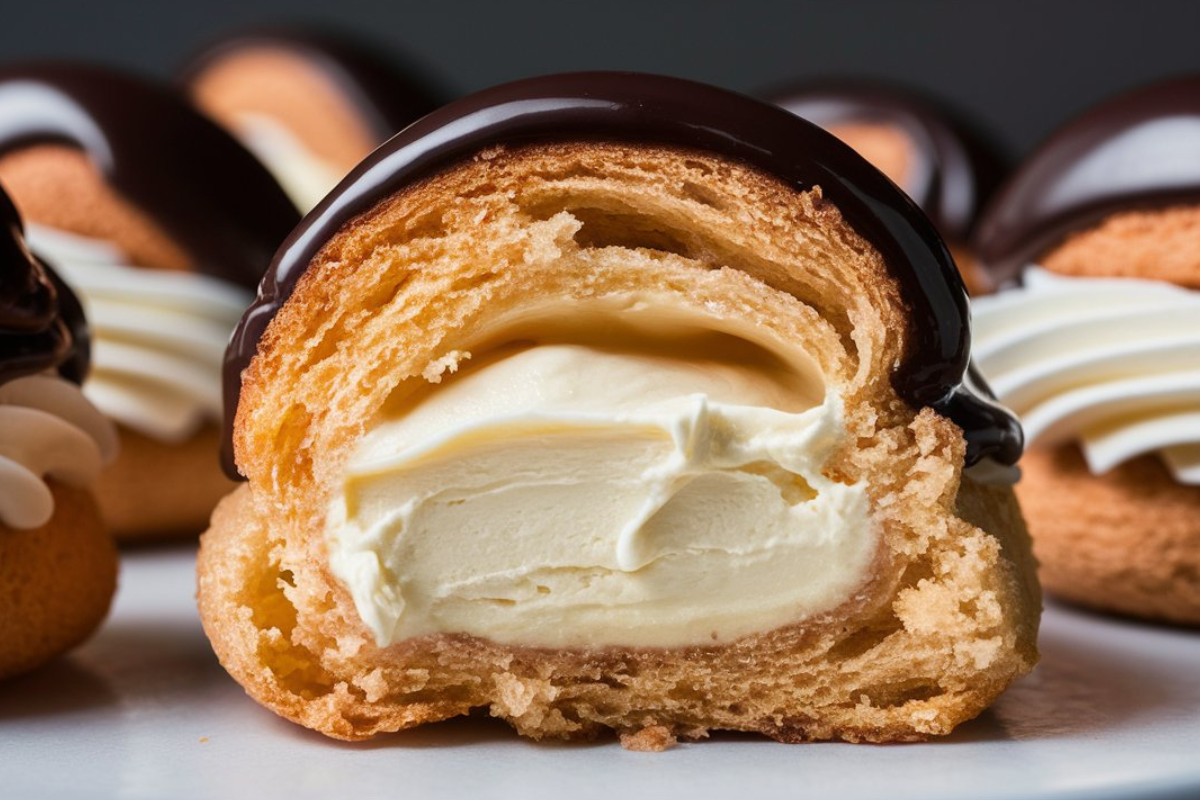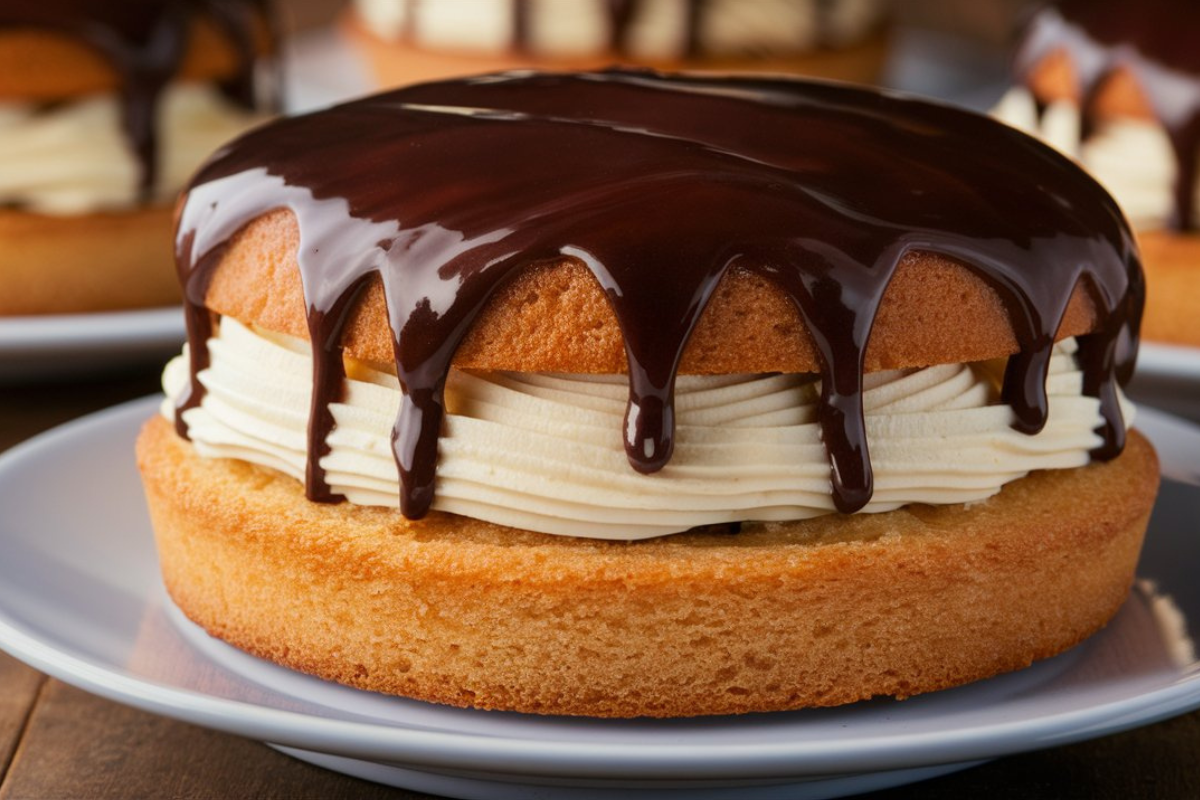 When we think of the ultimate indulgence, a cream-filled cake often comes to mind. This luxurious dessert, known for its rich layers of soft cake and luscious cream, has captured the hearts (and taste buds) of people around the world. But what exactly is a cream-filled cake called? Depending on where you are in the world, these delightful treats can go by different names, each with its own unique history and cultural significance. Therefore, let’s explore the world of these cakes, their varieties, and the nuances that make each type special.
When we think of the ultimate indulgence, a cream-filled cake often comes to mind. This luxurious dessert, known for its rich layers of soft cake and luscious cream, has captured the hearts (and taste buds) of people around the world. But what exactly is a cream-filled cake called? Depending on where you are in the world, these delightful treats can go by different names, each with its own unique history and cultural significance. Therefore, let’s explore the world of these cakes, their varieties, and the nuances that make each type special.
The Basics of These Decadent Desserts
At its core, a cream-filled cake is a type of dessert that features a soft, fluffy cake with a creamy filling nestled between its layers or inside its core. Moreover, the cream can range from rich custards to whipped creams, and the cake itself can be any variety from sponge to chiffon. Ultimately, the combination of textures and flavors is what makes these cakes so irresistible. They are often celebrated during special occasions, from birthdays to weddings, where their decadent nature can truly shine.
A World of Creamy Treats: Exploring Different Varieties
Cream-filled cakes come in various forms, each with its own name, preparation style, and cultural heritage. Consequently, below are some of the most popular types of these cakes around the globe:
1. Boston Cream Pie: A Classic American Dessert
Despite its name, the Boston Cream Pie is not a pie at all but rather a cake. This American classic consists of two layers of sponge cake filled with vanilla custard and topped with a glossy chocolate glaze. Indeed, the Boston Cream Pie is so beloved that it was named the official dessert of Massachusetts. The contrast between the light, airy cake, the creamy custard, and the rich chocolate topping makes it a perennial favorite.
Historical Insight: The Boston Cream Pie was first created at the Parker House Hotel in Boston in the late 1800s. The cake was initially known as a “Chocolate Cream Pie” but eventually took on its current name.
2. Napoleon Cake (Mille-feuille): A Layered French Delight
The Napoleon, also known as Mille-feuille, is a French pastry that layers puff pastry with rich pastry cream. This cake is often topped with powdered sugar or a glaze and can include a variety of fillings such as whipped cream or fruit preserves. As a result, the light, flaky layers combined with the smooth cream create a delightful texture contrast that is as pleasing to the eye as it is to the palate.
Cultural Significance: In France, the Mille-feuille is a symbol of fine patisserie skills and is often served during special occasions. The name “Napoleon” is believed to have been derived not from the French emperor, but possibly from the Italian city of Naples.
3. Tiramisu: An Italian Classic
Tiramisu is an Italian dessert that is as popular as it is decadent. Although it is not a traditional cake, it features layers of coffee-soaked ladyfingers (savoiardi) with a rich mascarpone cream, dusted with cocoa powder. Tiramisu is typically assembled in a rectangular dish and served in slices, but it can also be made into a more traditional cake shape.
Culinary Note: Tiramisu translates to “pick me up” in Italian, likely referring to the caffeine boost provided by the espresso. It’s a relatively modern dessert, originating in the Veneto region in the 1960s.
4. Chantilly Cake: A Hawaiian Favorite
Chantilly cake is a Hawaiian variation of the traditional cream-filled cake, often featuring a chocolate sponge cake with a light, fluffy frosting made from whipped cream, mascarpone, and sometimes even custard. Furthermore, fresh fruit, particularly berries, is often incorporated into the layers, adding a burst of flavor and a beautiful presentation.
Flavor Profile: The Chantilly cream, which is the star of this cake, is typically flavored with vanilla and sometimes almond, giving it a sweet, nutty undertone that complements the chocolate cake and fruit.
5. Swiss Roll: A Rolled Delight
A Swiss Roll is a type of sponge cake filled with cream and rolled into a cylindrical shape. This cake is popular in many parts of the world, including Europe and Asia, where it can also be filled with jam, chocolate, or fruit puree. The Swiss Roll is a versatile dessert, often enjoyed with a cup of tea or coffee.
Technique Tip: Rolling the cake while it’s still warm helps prevent cracks, making for a smooth, even roll. The cake’s airy texture pairs perfectly with the creamy filling, offering a light yet satisfying dessert.
6. Black Forest Cake: A German Specialty
The Black Forest Cake is a German specialty that layers chocolate sponge cake with whipped cream and cherries. It’s traditionally flavored with Kirschwasser, a clear cherry brandy, giving the cake a subtle boozy kick. Moreover, the cake is often adorned with chocolate shavings and maraschino cherries.
Cultural Context: The Black Forest Cake is named after the Black Forest region in Germany, known for its sour cherries and Kirsch. Consequently, this cake is a staple in German celebrations and is enjoyed worldwide.
How to Make Your Own: A Step-by-Step Guide
Creating a cream-filled cake at home is a rewarding experience, allowing you to customize the flavors and presentation to your liking. Therefore, here’s a general guide to making a classic dessert:
Step 1: Choose Your Cake Base
The first step in making a cream-filled cake is choosing the type of cake you want to use. For instance, common choices include:
- Sponge Cake: Light and airy, perfect for absorbing the cream.
- Chiffon Cake: Moist and tender with a bit of a bounce, ideal for more delicate creams.
- Butter Cake: Rich and dense, providing a sturdy base for heavier creams.
Each type of cake offers a different texture and flavor, so consider what will best complement your chosen filling.
Step 2: Prepare the Cream Filling
The filling is the heart of these cakes. As a result, some popular options include:
- Pastry Cream: A thick custard made from milk, eggs, sugar, and cornstarch, often flavored with vanilla.
- Whipped Cream: Light and fluffy, sweetened with sugar and sometimes flavored with vanilla or other extracts.
- Buttercream: Rich and smooth, made by whipping butter with powdered sugar, often with added flavors like chocolate or coffee.
The key to a perfect cream filling is consistency. Specifically, it should be thick enough to hold its shape between the layers of cake, yet soft enough to provide that melt-in-your-mouth experience.
Step 3: Assemble the Cake
Once your cake and cream are ready, it’s time to assemble. Here’s how:
- Level the Cake Layers: Use a serrated knife to trim the tops of your cake layers so they’re flat. This ensures stability and even layering.
- Add the Cream Filling: Spread an even layer of cream filling on top of each cake layer. Be generous, as this is where much of the cake’s flavor and texture come from.
- Stack the Layers: Carefully place each cake layer on top of the other, ensuring they’re aligned.
- Crumb Coat: Apply a thin layer of cream or frosting around the outside of the cake to seal in the crumbs. This will make the final frosting layer smoother.
- Final Frosting: Finish with a thicker layer of cream or frosting, using a spatula to create smooth or decorative patterns.
Step 4: Decorating Tips
Decoration is where you can get creative. For example, you might choose to:
- Add Fruit: Fresh berries, sliced fruit, or even candied fruit can add both color and flavor.
- Use Chocolate: Chocolate shavings, curls, or ganache drizzles are classic choices.
- Top with Nuts: Toasted almonds, hazelnuts, or pistachios can add a nice crunch.
Ultimately, the key is to complement the flavors of your cake and filling, creating a visually appealing and delicious dessert.
International Twists on Cream-Filled Cakes
Cream-filled cakes are beloved in many cultures, each bringing its own twist to the concept. Here are a few international variations:
1. Japanese Strawberry Shortcake
In Japan, cream-filled cakes are often light and less sweet than their Western counterparts. The most famous example is the Japanese Strawberry Shortcake, which features layers of airy sponge cake with whipped cream and fresh strawberries. Thus, the Japanese approach to cream cakes emphasizes simplicity and elegance, with a focus on the natural flavors of the ingredients.
Tip: Japanese cakes often use a combination of whipped cream and mascarpone for a lighter, creamier texture.
2. The Luxurious French Opera Cake
The Opera Cake is a French dessert known for its intricate layers. It typically includes almond sponge cake soaked in coffee syrup, layered with coffee buttercream and chocolate ganache. Additionally, the cake is finished with a chocolate glaze and often features a gold leaf decoration. This cake is a luxurious treat, perfect for special occasions.
Culinary Insight: The Opera Cake is believed to have been created in the 1950s by the French pastry chef Cyriaque Gavillon. It’s named after the Paris Opera House, reflecting the cake’s grandeur.
3. Spiced Indian Cakes
In India, cream cakes are often flavored with regional spices and ingredients such as cardamom, saffron, and rose water. For example, one popular variation is the Ras Malai Cake, inspired by the traditional Indian dessert Ras Malai. This cake features layers of cardamom-flavored sponge cake filled with sweetened cream and topped with pistachios and rose petals.
Cultural Note: Indian cream cakes are often enjoyed during festivals and weddings, symbolizing prosperity and sweetness in life.
Nutritional Tips for Cream-Filled Cakes
While cream-filled cakes are undeniably delicious, they can also be quite indulgent. Therefore, here are some tips for enjoying these treats in a balanced way:
1. Practice Portion Control
Cream-filled cakes can be rich and calorie-dense, so consider serving smaller slices. This allows you to enjoy the cake’s flavors without overindulging.
2. Lighten Up Your Cream
If you’re looking to reduce the richness of the cake, consider using lighter versions of the cream filling. For instance, you can replace heavy cream with whipped Greek yogurt or use a combination of cream and low-fat mascarpone.
3. Incorporate Fresh Fruits
Incorporating fresh fruit into your cream-filled cake not only adds natural sweetness but also provides vitamins, fiber, and antioxidants. Berries, mango, and citrus fruits are excellent choices.
4. Use Whole Grains for a Healthier Base
Using whole wheat flour instead of white flour in the cake base can increase the fiber content, making the dessert slightly more nutritious. Furthermore, the nuttier flavor of whole wheat also pairs well with many cream fillings.
Final Thoughts on These Creamy Delights
Cream-filled cakes are more than just a dessert; they are a celebration of texture, flavor, and indulgence. From the classic Boston Cream Pie to the elegant French Opera Cake, these treats offer a variety of experiences for the taste buds. Whether enjoyed at a special event or as a luxurious treat on a quiet evening, a cream-filled cake is sure to delight.
Ultimately, these cakes, with their rich history and diverse cultural interpretations, remind us of the joy that food can bring. Whether you’re making one from scratch or enjoying a slice from a favorite bakery, cream-filled cakes offer a little slice of heaven in every bite.


1 thought on “What is a cream filled cake called?”